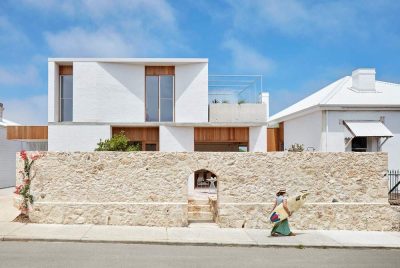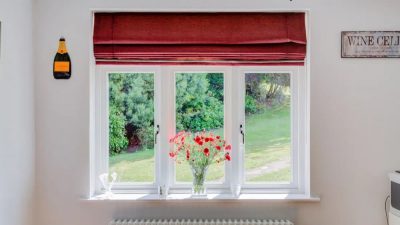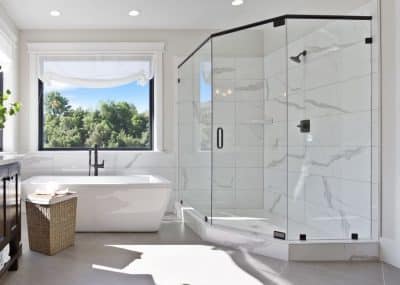Selling a home is never just about location—it’s about feeling. And when it comes to probate properties, those feelings can be complicated. These homes are often filled with memories, outdated fixtures, and emotional weight. But if your goal is to move the property and make a clean break—whether for closure or financial necessity—then giving the house a thoughtful design upgrade can be one of your smartest strategies.
That’s where a few strategic, aesthetic changes can make all the difference. By focusing on visual appeal and practical updates, heirs or executors can present a property that buyers actually want—without gutting the place or breaking the bank. A great example of this thoughtful, market-savvy transformation can be seen in Unbiased Options’ approach to selling homes in probate, which prioritizes presentation as much as process.
Let’s walk through some of the best design moves that turn a dated family home into a desirable listing buyers can’t scroll past.

Why Aesthetics Matter in Probate Sales
You don’t need to turn the house into a Pinterest board, but it does need to feel fresh. Buyers are often walking into a probate home with low expectations—stained carpets, dim lighting, maybe even a faint smell of mothballs. If they’re greeted instead by a clean, well-lit, and thoughtfully arranged space, they’re immediately more engaged.
More than anything, aesthetics create emotional cues. A house that looks well-maintained suggests it’s also been well cared for. That trust goes a long way, especially when buyers can’t ask the former homeowner questions.
Even more, well-staged homes sell faster and for more. According to the National Association of Realtors, 83% of buyers say staging makes it easier to visualize the property as their future home. That mental shift—from “someone else’s place” to “my new home”—is the exact reaction you want.
Declutter First—Emotionally and Visually
Probate properties are often filled with decades of someone’s life. That might mean collections, heirlooms, extra furniture, or just general accumulation. It’s tempting to leave things as they are “just until the sale,” but clutter kills interest.
Start with these steps:
- Remove personal items: Photos, awards, memorabilia—they make buyers feel like visitors rather than potential owners.
- Edit furniture: Keep only what makes the space look open and functional. That oversized recliner? It’s not helping.
- Neutralize the space: Think hotel room meets magazine layout. Clean, comfortable, but not too personal.
A good rule of thumb: If it doesn’t serve a visual or functional purpose, it can probably go.
Let There Be (Better) Light
Lighting is one of the simplest and most transformative upgrades you can make—especially in older homes. If a space feels dim or dated, chances are it’s the bulbs, fixtures, or window treatments.
Here’s how to fix it:
- Upgrade old fixtures: Swapping out brass or overly ornate ceiling lights with something modern (and inexpensive) instantly updates the look.
- Use warm LED bulbs: Stick with soft white tones (2700K–3000K) to create a cozy and flattering glow.
- Maximize natural light: Remove heavy curtains or outdated valances. Sheer panels or no treatments at all often work better.
It doesn’t take a full electrical overhaul—just a few smart tweaks to make the space feel brighter, more open, and more current.
Paint: The Makeover Workhorse
There’s no single home improvement project that delivers more bang for the buck than a coat of paint. And in a probate home, where dated wallpaper or faded colors are common, this step is non-negotiable.
Stick to these principles:
- Neutral reigns supreme: Buyers need a blank canvas. Whites, light greys, and greige tones work best.
- Ceilings and trim matter: A freshly painted ceiling makes the room feel new. Clean white trim adds contrast and polish.
- Cover wallpaper or paneling: Removing wallpaper is ideal, but if time is tight, priming and painting over it is often acceptable.
Paint doesn’t just freshen up the space—it hides small imperfections, boosts perceived cleanliness, and makes everything else feel intentional.
Flooring Fixes Without the Full Renovation
You don’t need to tear up the entire house to make the floors feel fresh. If hardwood exists under old carpet, it might be worth exposing. If not, there are other ways to elevate the look:
- Professional carpet cleaning: This quick win removes odors and stains.
- Peel-and-stick vinyl planks: These mimic wood or tile and are renter-proof, budget-friendly, and easy to install.
- Layer with area rugs: When floors can’t be changed, rugs can hide flaws and anchor rooms.
Flooring should always feel clean and safe—even if it’s not the newest material on the block.
Kitchen & Bath: Focus on Fixtures, Not Full Remodels
While a full kitchen or bathroom renovation might not be realistic in a probate sale, small updates go a long way.
Try these quick wins:
- Swap dated hardware: New cabinet pulls or faucet fixtures can modernize the room instantly.
- Replace light switch plates: Yellowed or cracked plates are minor, but they signal neglect.
- Deep clean grout and caulking: Bathrooms especially benefit from fresh, white details.
If the budget allows, painting cabinets or changing out light fixtures in these areas can increase perceived value without massive spend.
Layout and Flow: Less Is Often More
Many inherited homes have floor plans that don’t quite match today’s expectations. Formal dining rooms, bulky furniture arrangements, or closed-off kitchens can make spaces feel smaller than they are.
You can’t knock down walls, but you can:
- Rearrange furniture: Open up walkways and create conversational seating.
- Define spaces clearly: Use rugs and lighting to show how each area functions.
- Borrow from adjacent rooms: Move pieces around to balance under- or over-furnished areas.
Buyers don’t just want space—they want to see how it works.
Curb Appeal Still Counts
A great first impression starts at the curb. Even if the inside is spotless, an overgrown yard or faded paint can scare buyers off before they get to the door.
A few curb appeal upgrades to consider:
- Tidy up the landscaping: Trim hedges, mow the lawn, and add a few potted plants.
- Refresh the front door: A bold new color or a fresh coat of paint signals “welcome.”
- Power wash surfaces: Driveways, siding, and porches all look newer with a quick rinse.
Think of this as the “hook” that gets them inside. If the outside looks forgotten, they’ll assume the rest is too.
Should You Hire a Stager?
Professional stagers understand buyer psychology, and if your market supports it, their input can boost your sale price significantly. But if hiring a pro isn’t feasible, lean on these stager-approved tips:
- Create a clear focal point in each room.
- Use mirrors to reflect light and expand space.
- Keep colors cohesive across rooms.
- Add life with plants or greenery—real or fake.
- Remove half of what’s on any shelf or counter.
The goal is to tell a subtle story about how the home could be lived in, without shouting the personality of its previous owner.
Emotional Space for Buyers and Sellers
One of the hardest parts of selling a probate home is detaching sentiment from the sale. That’s where thoughtful design comes in—it helps everyone involved.
Sellers benefit from seeing the home evolve into something that feels like a gift to the next owner, not just a transaction. Buyers get a clean slate where they can imagine new memories. And when design helps bridge that emotional gap, the whole process feels smoother.

Final Thoughts: Sell the Potential, Not the Past
Probate properties are unique. They come with history, emotion, and sometimes physical quirks that buyers don’t see in standard listings. But that doesn’t mean they can’t shine. With just a few smart design moves—decluttering, painting, lighting, and staging—you can highlight the home’s best features and make it easier for buyers to say yes.
It’s not about erasing the past. It’s about updating the canvas so someone else can start a new chapter.








